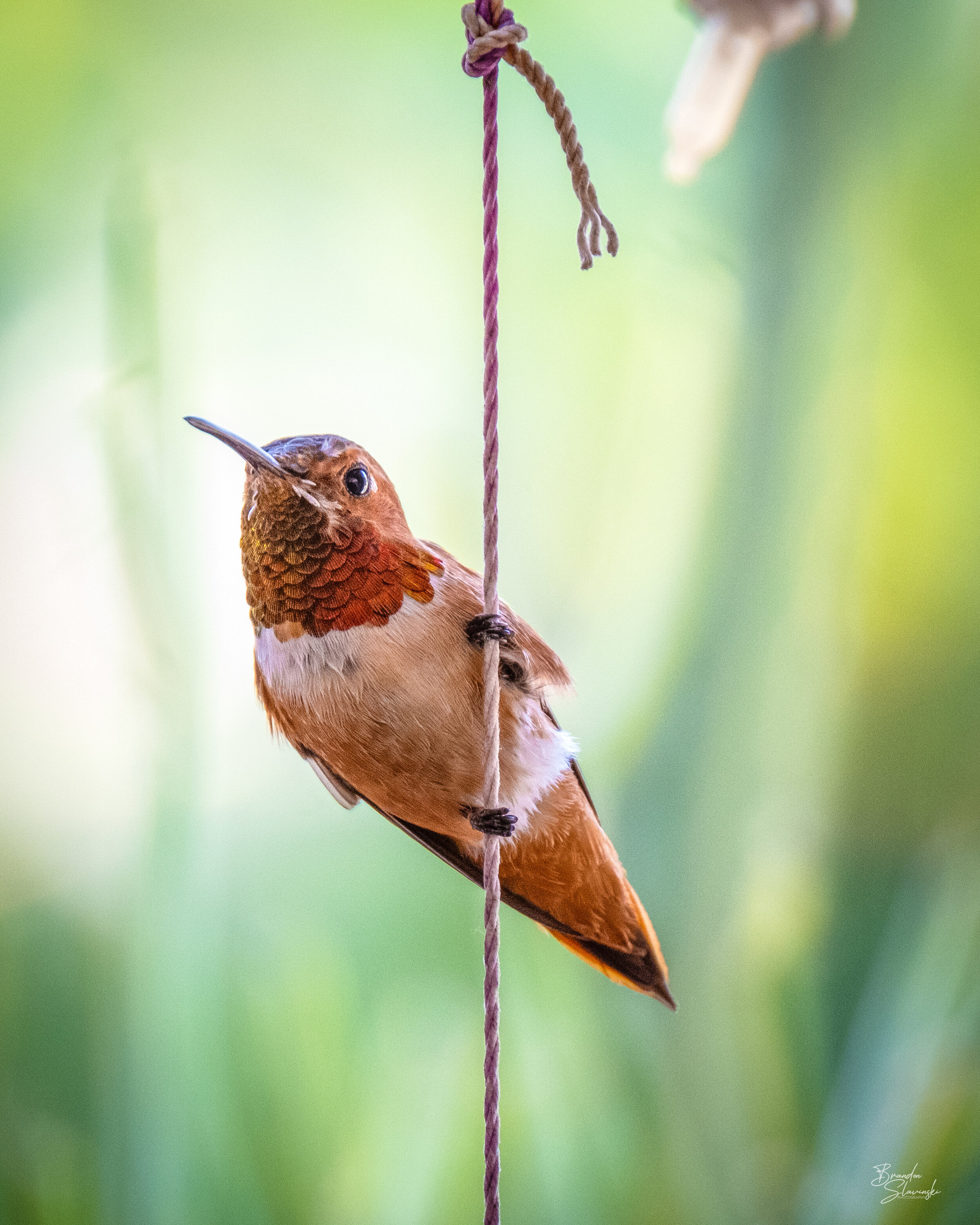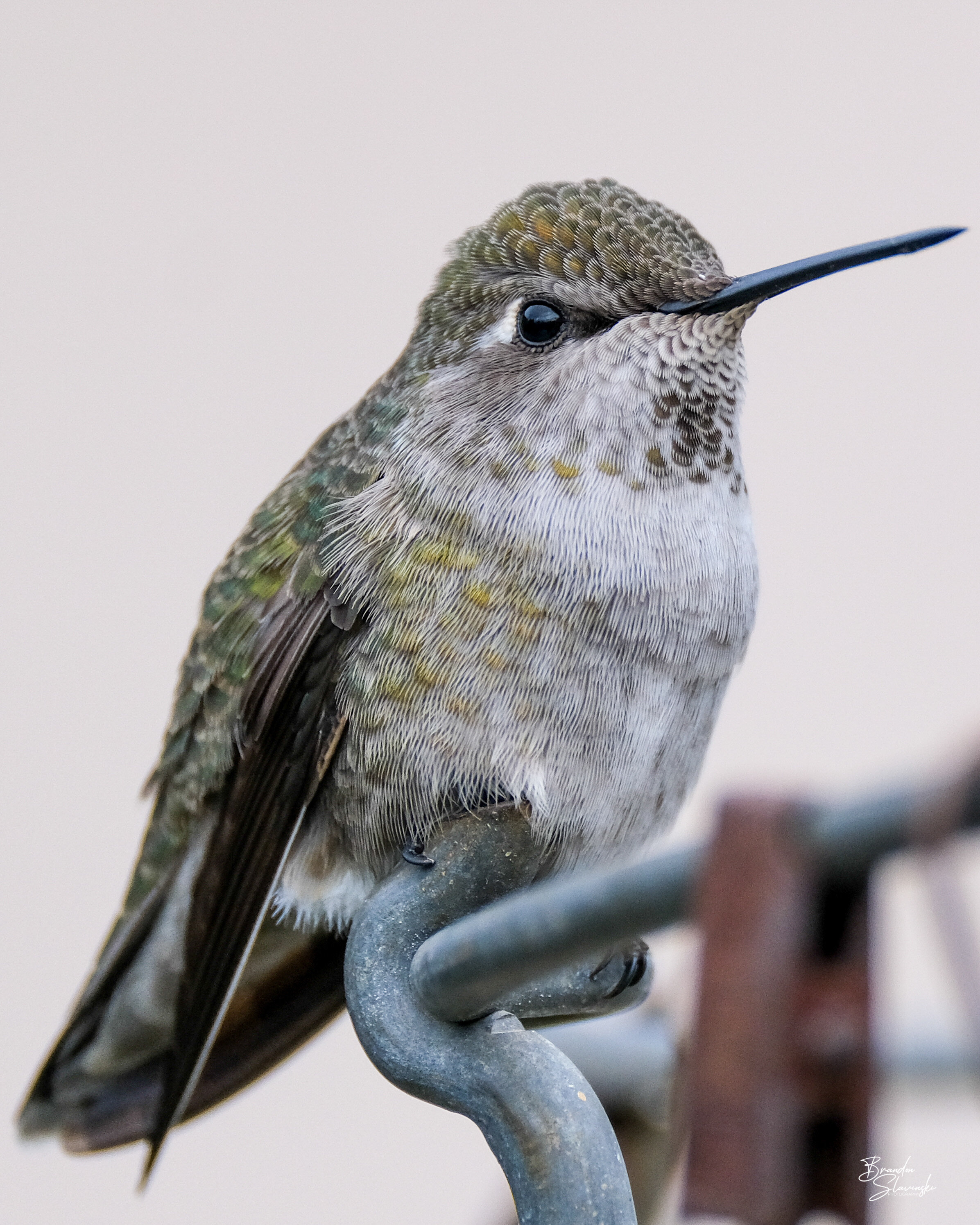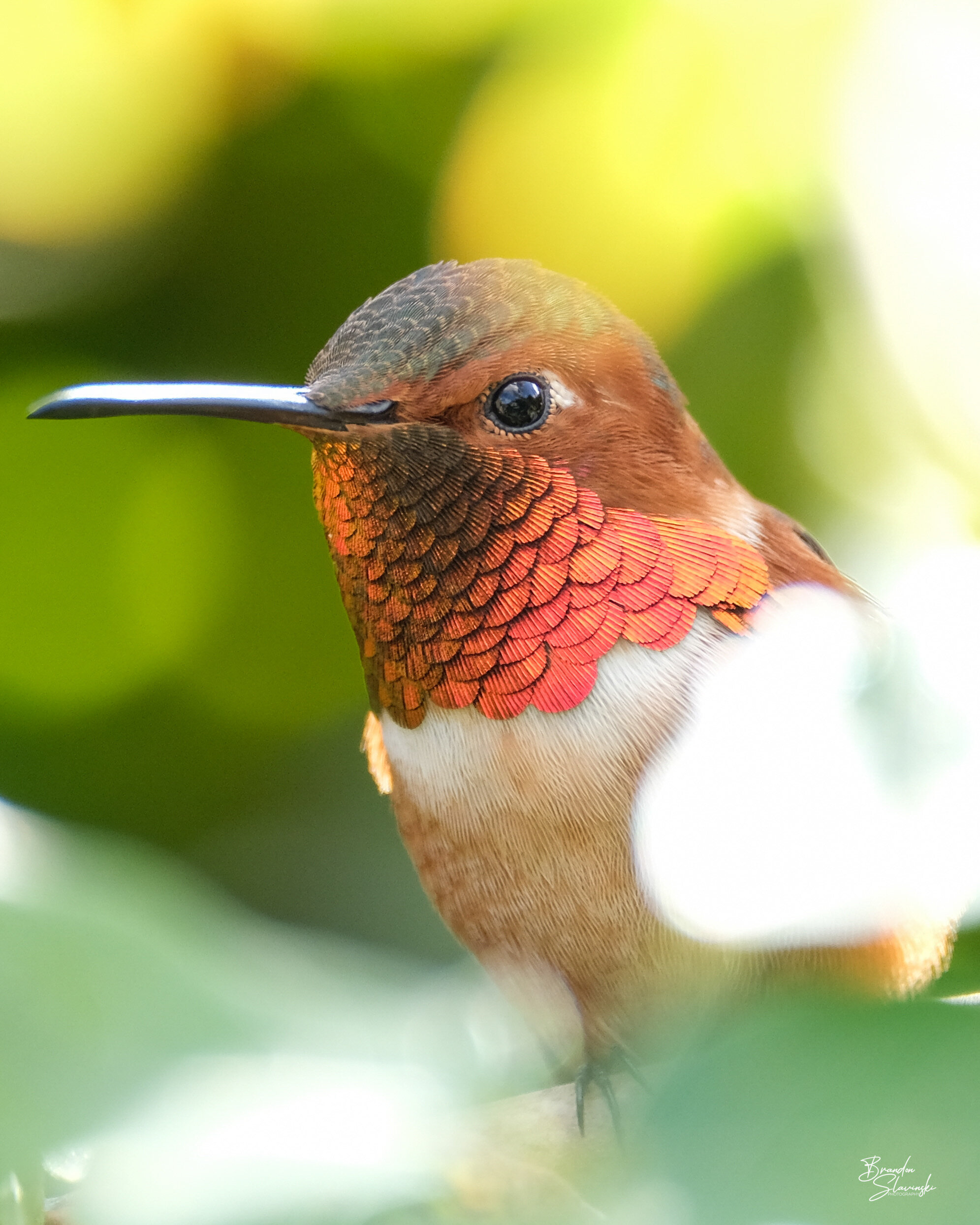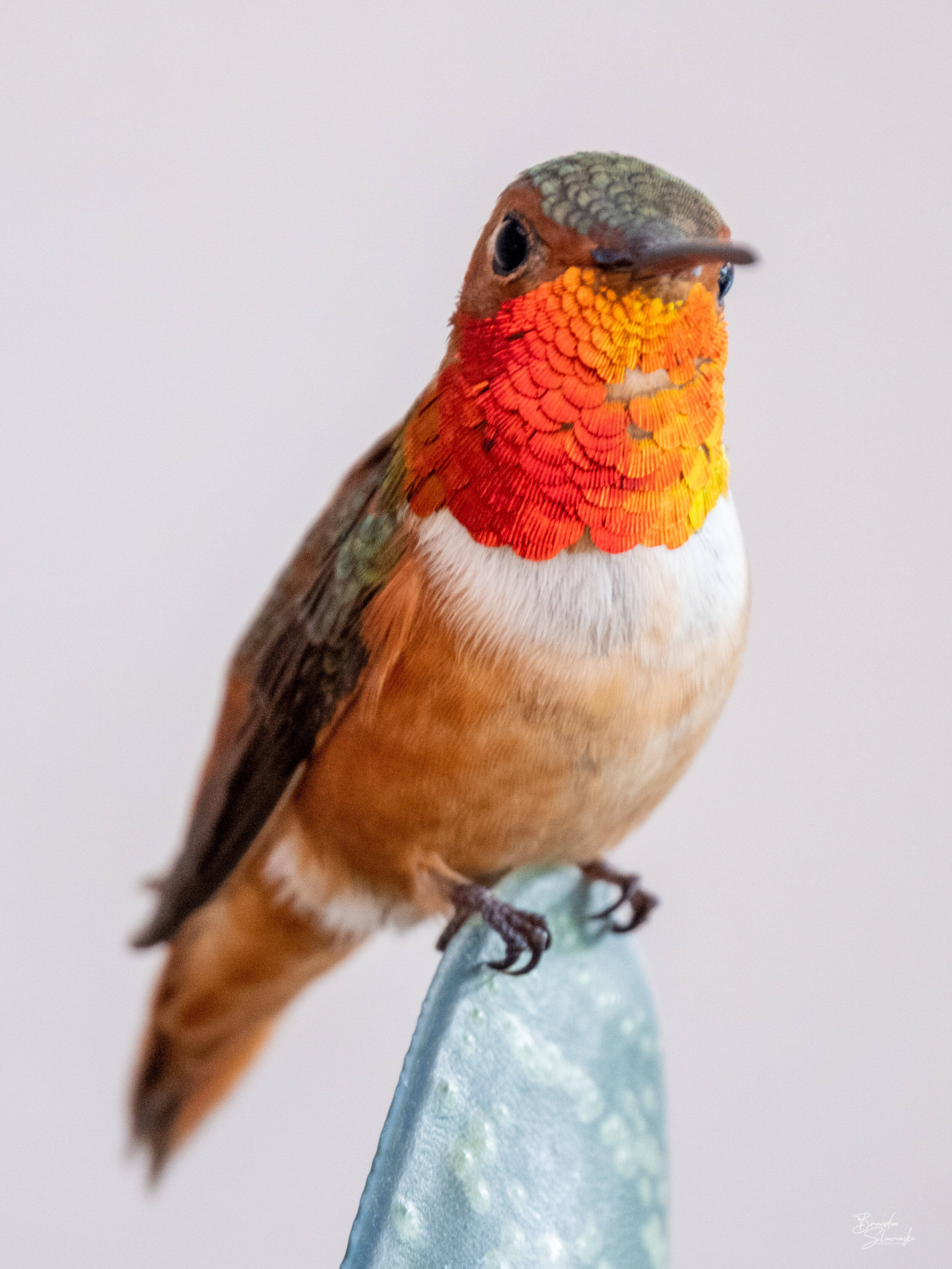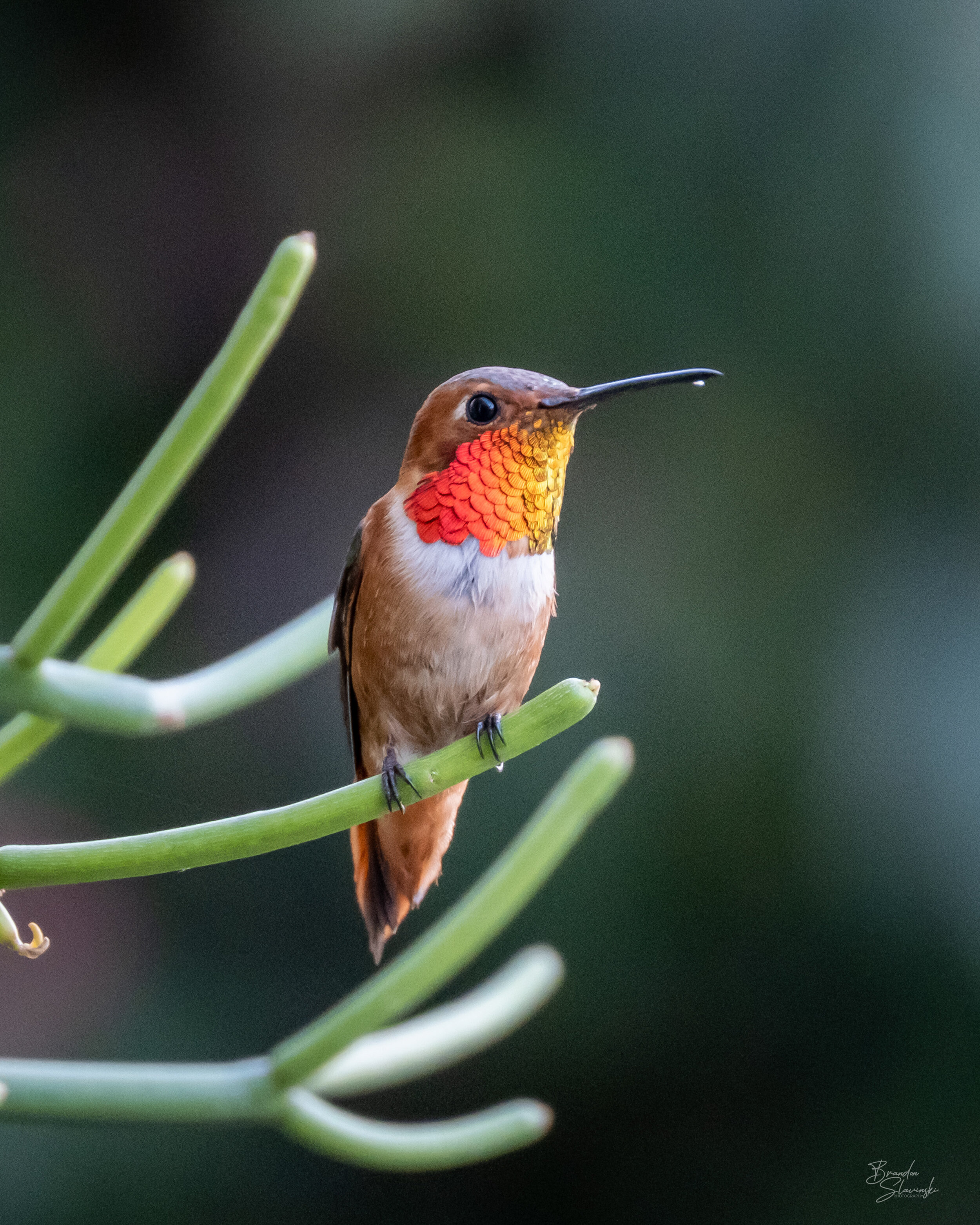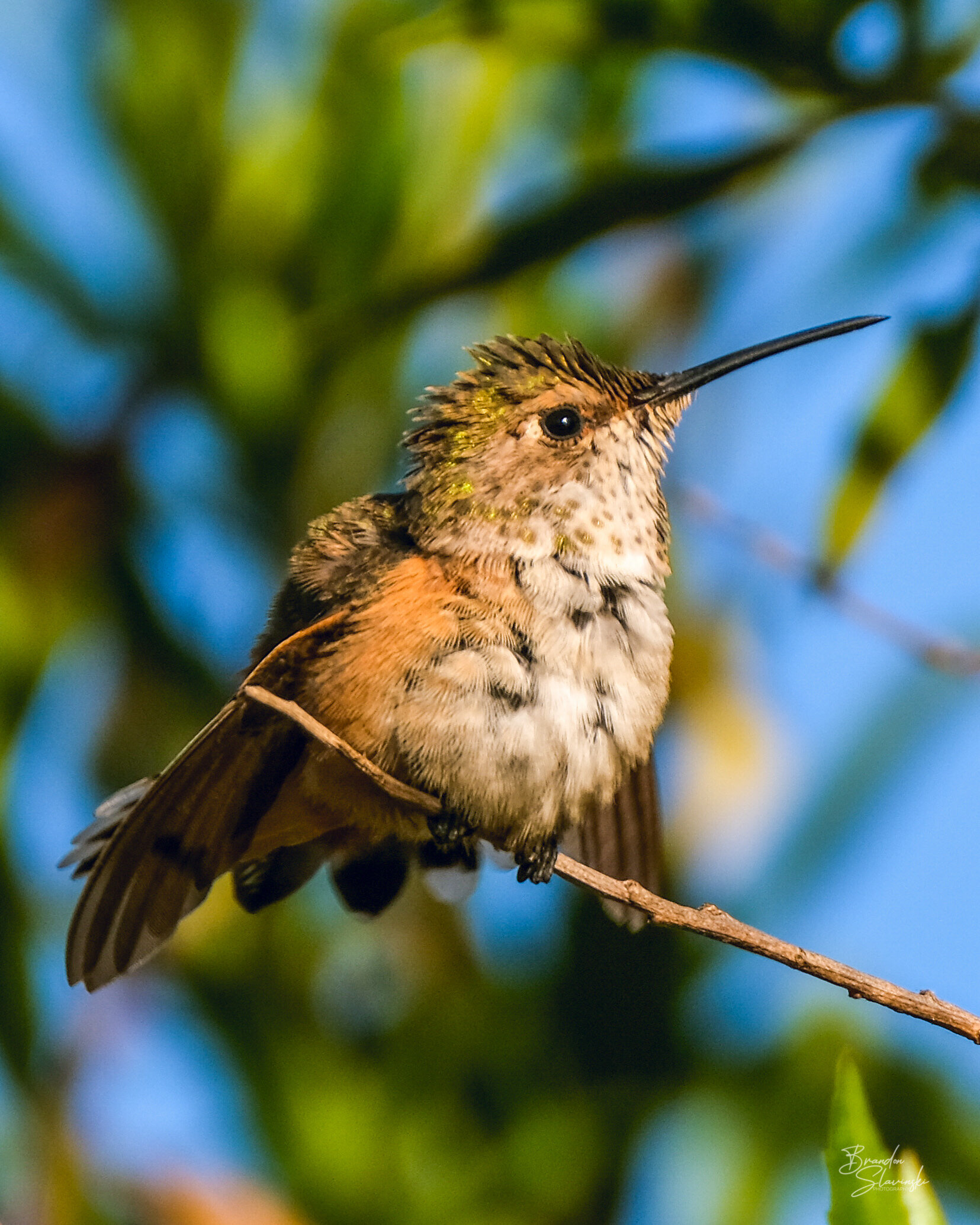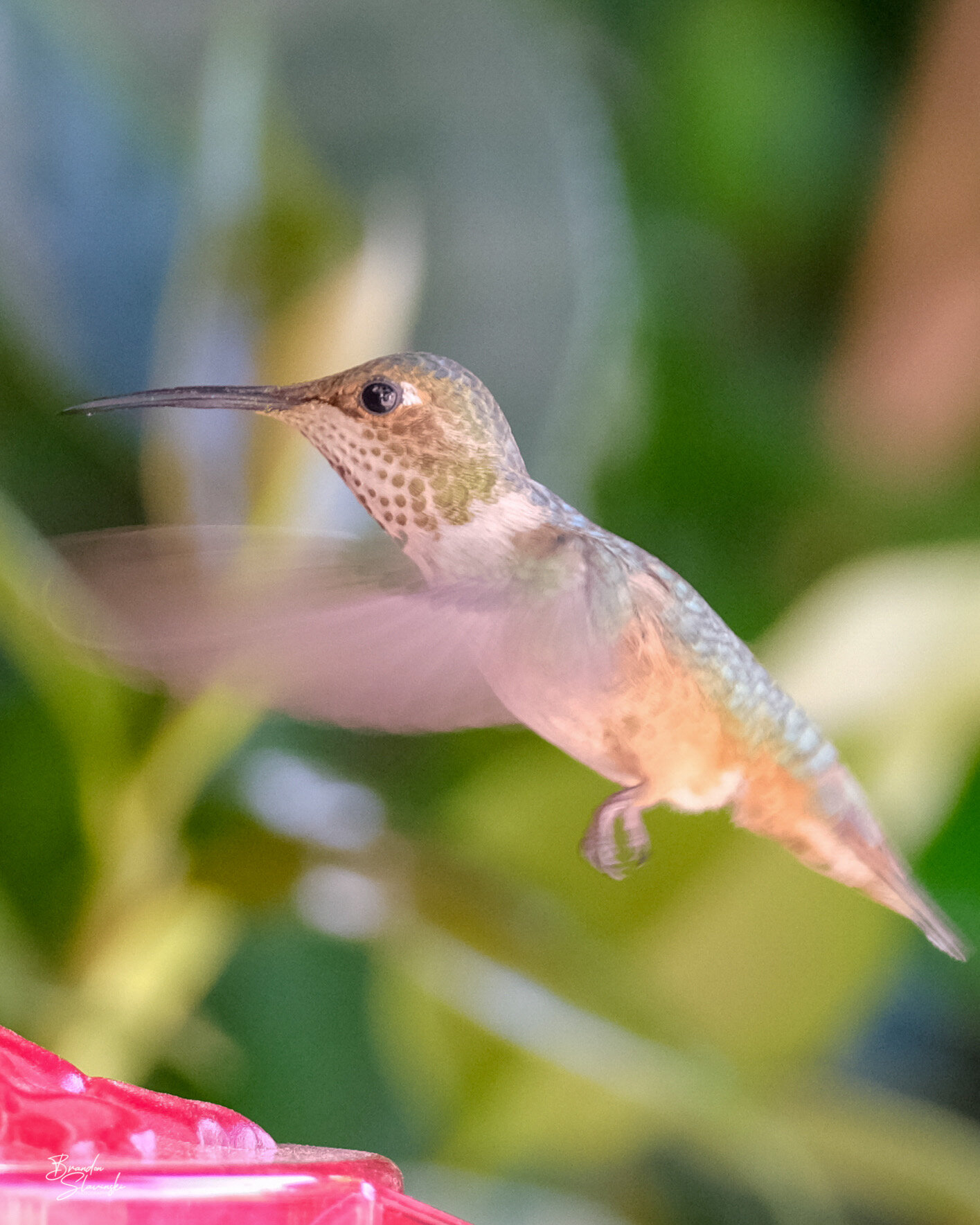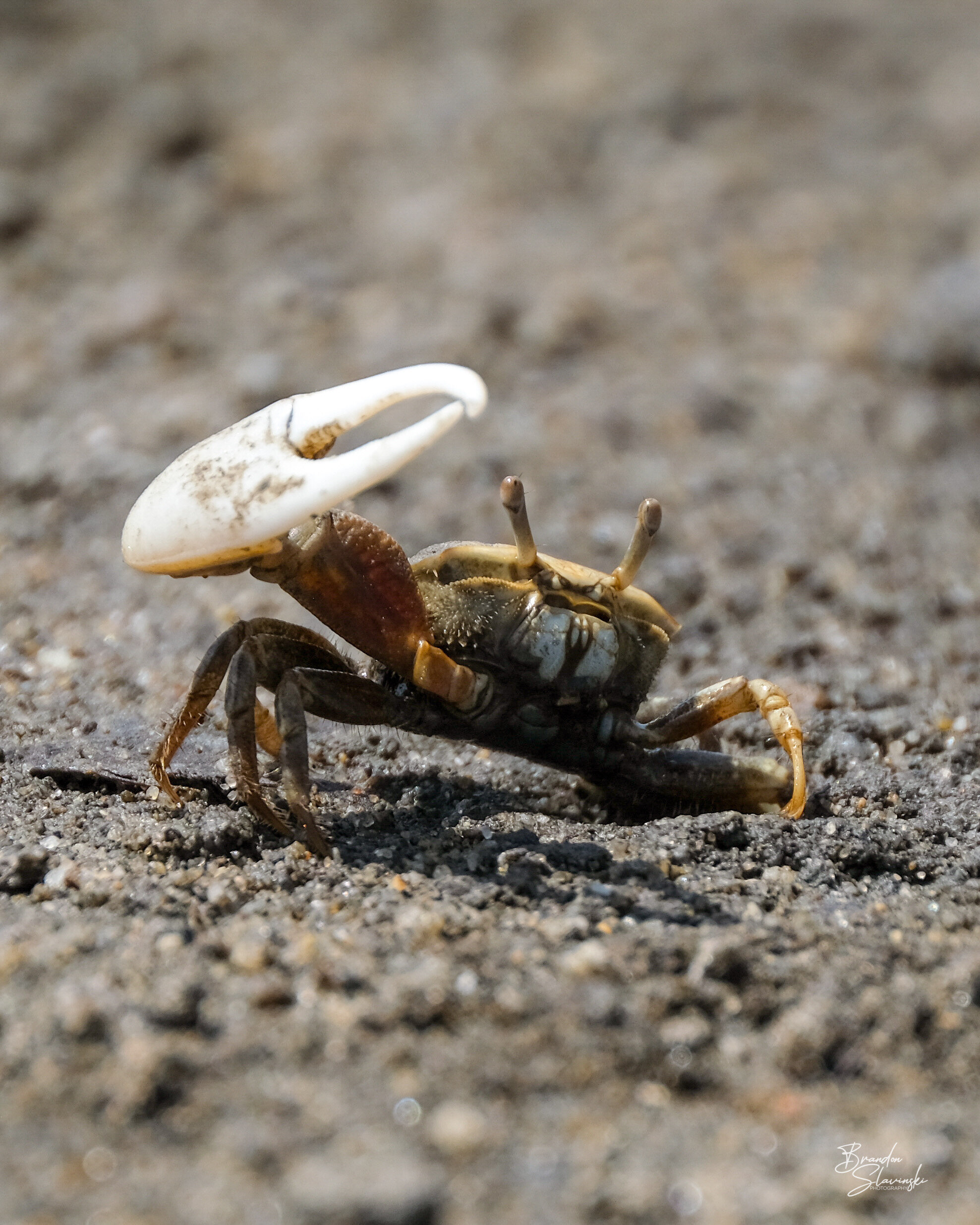Undeniably enjoyable to observe, hummingbirds are easy to identify as they announce their presence with a trill while flying. Over the past few years, I've taken numerous photos of Allen's Hummingbirds in particular. My wonderful in-laws have a beautiful garden with feeders hung throughout, where these birds zip around, constantly feeding. I decided to switch my camera to video mode to finally capture these captivating creatures both inside and outside the garden. Take a moment to appreciate these swift, nectar-seeking birds as they dart from flower to flower in the video below.
This time around instead of going the standard 60fps video and slow down in post route, for the majority of this video I decided to switch Fujifilm’s X-T3 to the FullHD 120fps 5x slow motion mode. This setting provided the opportunity to get a more intimate look at how these beautiful birds flutter about.
Female in Flight
This female Allen’s Hummingbird uses precise aiming to access nectar from a feeder.
Blooming Anigozanthos Rufus Backdraft
For the shoot location, I luckily stumbled on a place that had these beautiful pink and yellow flowers identified as Lantana “Pink Huff” and vibrant deep red Anigozanthos rufus Backdraft that the hummingbirds were absolutely obsessing over. These flower provided a perfect background to watch how the birds interacted. It was so beautiful that I actually came back the second day at the exact same time to capture more footage.
Check out some of the my favorite Allen’s Hummingbird photos taken of these particular birds over the past few years with the X-T3.
